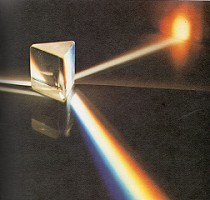
surfresearch.com.au
Jacob Bronowski:
The Ascent of Man: 1, 1973.
 |
surfresearch.com.au
Jacob Bronowski: The Ascent of Man: 1, 1973. |
|
Chapter 2: The Harvest
of the Seasons
|
|
Impala.
[Page 22] |
|
Herd of Topi. [Page 23] |
[Pages 30-33]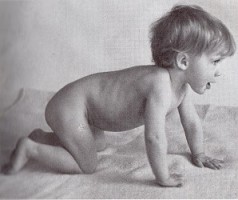 |
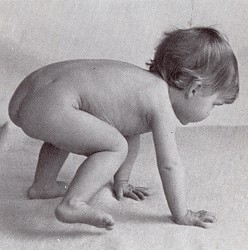 |
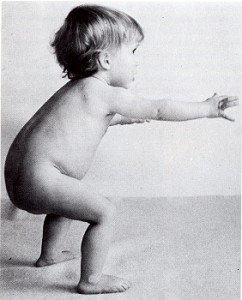 |
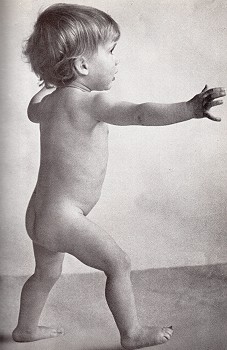 |
[Page
34] 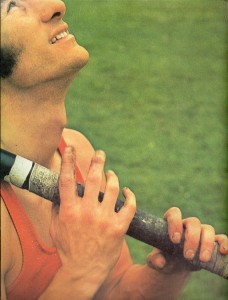 |
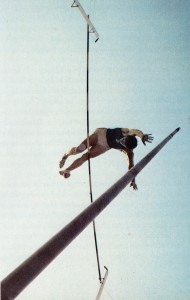 [Page 35]
[Page 35] |
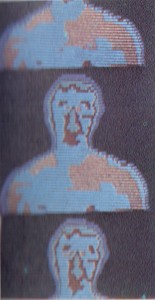 |
13.
The earliest creatures in the sequence
leading to
man were nimble-eyed and delicate-fingered insect and fruit-eaters like the lemurs. Modern lemur from Madagascar, and skeleton of the fruit-eating bush-baby of East Africa, a close relation of the lemur. (Note the structure of the hand and nails.) [Page 44] |
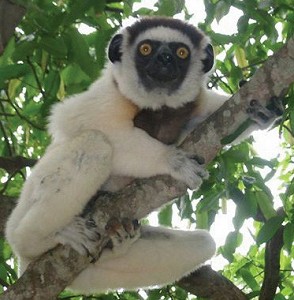 |
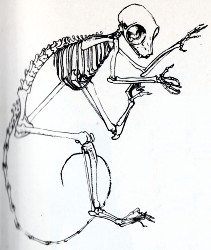 |
| . It was held in a simple way, by pressing its thick end against the palm of the hand in a power-grip. (The ancestors of man had a short thumb, and therefore could not manipulate very delicately, but could use the power-grip.) And, of course, it is a meat-eater's tool almost certainly, to strike and to cut. 11. The steady use of
the same tool for so long shows the
strength of the invention.
Every animal leaves traces of what it was; man alone leaves traces of what he created. Acheulian hand axe of Homo rectus. [Page 39] |
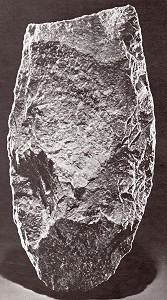 |
12. The hunt is a communal undertaking of which the climax, but only the climax, is the kill. A Wayam Indian hunter group, Amazon Basin, eating together before the hunt. [Page 43] |
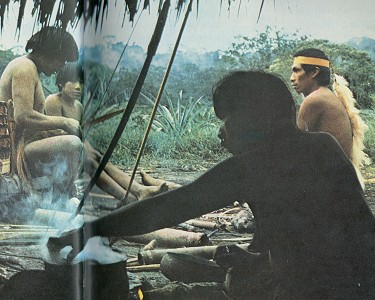 |
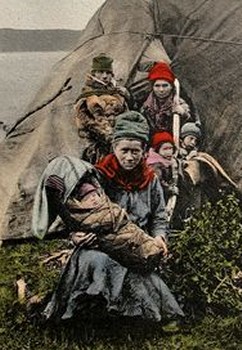 |
16. A Swedish Lapp woman with her children on the summer migration to the coastal islands of Norway, 1925, and wild reindeer herds after confinement in winter quarters. [Page 51] |
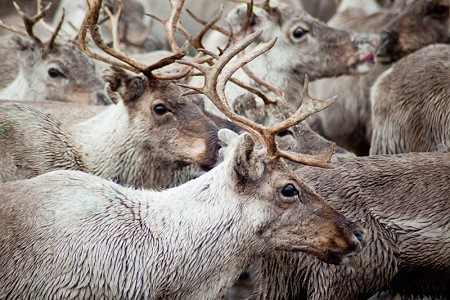 |
17. The
transhumance life on the move
in a landscape of ice. Drawn by the Lapp, Johan Turi, for his own written account of his people's life: pack animals move beside the wild herds. The lead reindeer buck is guided by a herdsman on skis. [detail] [Pages 52-53]
|
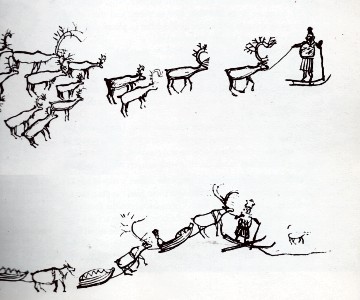 |
| Top |
Chapter
2: The Harvest of
the Seasons
|
| 1. 2. 3. 4. 5. 6. 7. 8. 9. 10. 11. 12. 13. 14. 15. 16. 17. 18. 19. |
Spring
spawning dance of the grunion 24 (National
Geographic) p18. Computer-generated Renaissance perspective 25 exercise and DNA spiral p2, 3, and p21. a. Impala (Ed Ross) p22. b. Herd of Topi (Simon Trevor, Bruce Coleman Ltd) p23. The Omo beds (Yves Coppens) p25. Olduvai Gorge Project http://www.olduvaiproject.org/what-is-olduvai-gorge/ Modern and fossil nyala horns, Musde de l'Homme, Paris (Yves Coppens) p27. The Taung child's skull, University of Witwatersrand, Johannesburg (Alun R. Hughes, by permission of Prof. P. V. Tobias) p28. Finger and thumb bones of Australopithecus (Mary Waldron) p28. Fourteen-month-old child (Gerry Cranham) p30, p31, p32, p33. Pole-vaulter in action (Gerry Cranham) p34, p35. Computer-graphic display of stages in evolution of the head, p36-p37. Note that these are incomplete, the missing images reproduced below. Acheulian hand axe (Lee Boltin) p39. Wayana Indian hunter group (Cornell Capa, Magnum) p42-p43. a. A modern lemur (Ed Ross) p44. Modern day lemur, Madagascar. http://www.africanbudgetsafaris.com/budget-lodge-safaris/eastern-madagascar-safari/ b. The skeleton of a bush-baby (Jonathan Kingdon, by courtesy of Academic Press) p45. a. Magdalenian reindeer horn harpoon, Ashmolean Museum, Oxford p46. Bilaterally-barbed decorated harpoon. (Unpublished Magdalenian art from Pont d’Ambon) http://paleo.revues.org/2866 b. Decorated staff, National Gallery of Art, Washington (Hugo Obermaier) p47. c. Rock painting (Erwin 0. Christensen, by courtesy of Bonanza Books) p47. Lapp reindeer herd(er)s, 1900 (Norsk Folkemuseum, Oslo) p48-p49. A Sami family in Norway around 1900 (wikipedia.org) https://en.wikipedia.org/wiki/Sami_people#/media/File:Saami_Family_1900.jpg a. Lapp woman (Norsk Folkemuseum, Oslo) p51. Lapp Family
in Norway, Postcard (Debbie
Leatherbery)
https://www.pinterest.com/pin/270427152599835116/b. Wild reindeer herds (Gunnar Ronn) p51. Reindeer (Rangifer Tarandus) herding, Finnmark, Norway (Lawrence Hislop) http://www.grida.no/photolib/detail/reindeer-rangifer-tarandus-herding-finnmark-norway_c47b Lapps on the move, drawings by Johan Turi, 1910 (Norsk Folkemuseum, Oslo) p52-p53. The illustration has been severely cropped, the double-page spread is reproduced below. Recumbent bison, Altamira (Michael Holford) p54, p55. Outline of a hand, Santander (Achille B.Weider) p57. Hand stencils probably made by a man (left) and a woman (right), El Castillo cave, Spain. (Roberto Ontanon Peredo) Were the First Artists Mostly Women? (Virginia Hughes, National Geographic) http://news.nationalgeographic.com/news/2013/10/131008-women-handprints-oldest-neolithic-cave-art/ |
| 10. The head is the spring which drives cultural evolution. | 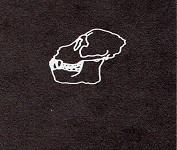 |
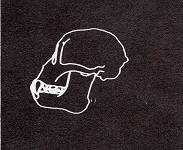 |
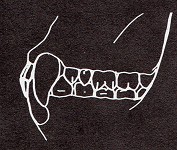 |
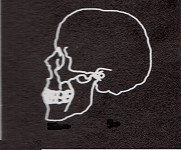 |
| Aegytopthecus | Dryopithecus | Dryopithecus | [Ramapithecus]
|
|
| Computer-graphic display of stages in evolution of the head. | 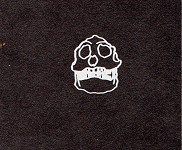 |
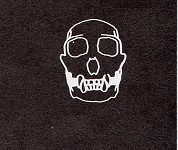 |
17. The transhumance life on the move in a landscape of ice. Drawn by the Lapp, Johan Turi, for his own written account of his people's life: pack animals move beside the wild herds. The lead reindeer buck is guided by a herdsman on skis. [detail] [Pages
52-53]
|
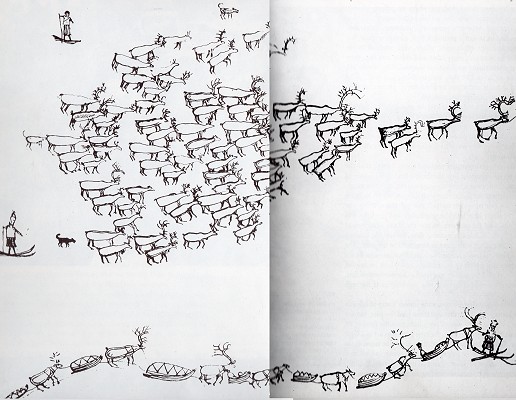 |
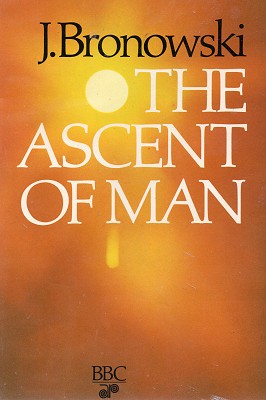 |
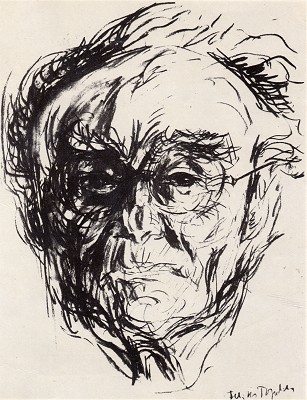 |
| Top |
Chapter 2: The Harvest
of the Seasons
|
| home | catalogue | history | references | appendix |